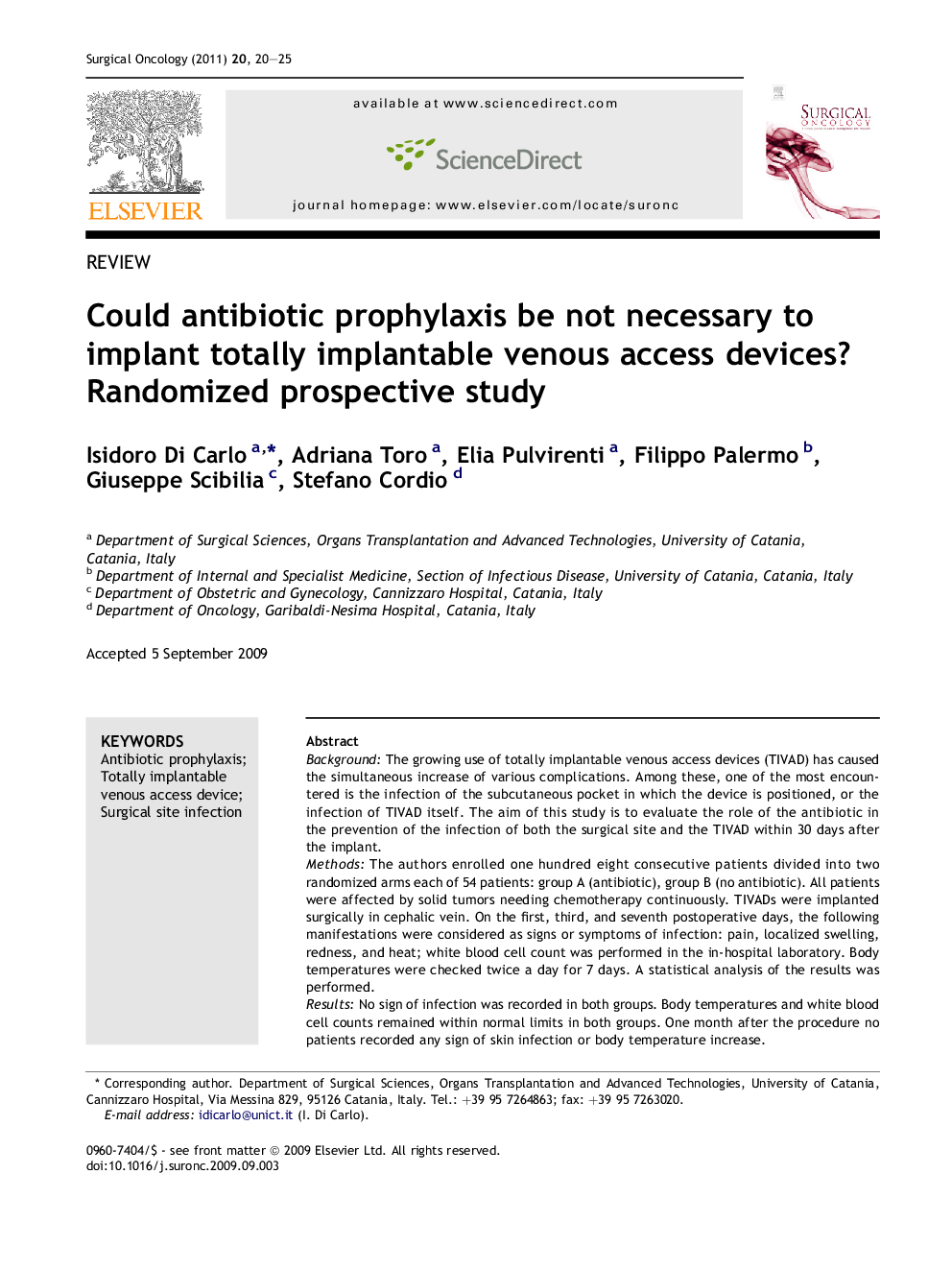| Article ID | Journal | Published Year | Pages | File Type |
|---|---|---|---|---|
| 3998074 | Surgical Oncology | 2011 | 6 Pages |
BackgroundThe growing use of totally implantable venous access devices (TIVAD) has caused the simultaneous increase of various complications. Among these, one of the most encountered is the infection of the subcutaneous pocket in which the device is positioned, or the infection of TIVAD itself. The aim of this study is to evaluate the role of the antibiotic in the prevention of the infection of both the surgical site and the TIVAD within 30 days after the implant.MethodsThe authors enrolled one hundred eight consecutive patients divided into two randomized arms each of 54 patients: group A (antibiotic), group B (no antibiotic). All patients were affected by solid tumors needing chemotherapy continuously. TIVADs were implanted surgically in cephalic vein. On the first, third, and seventh postoperative days, the following manifestations were considered as signs or symptoms of infection: pain, localized swelling, redness, and heat; white blood cell count was performed in the in-hospital laboratory. Body temperatures were checked twice a day for 7 days. A statistical analysis of the results was performed.ResultsNo sign of infection was recorded in both groups. Body temperatures and white blood cell counts remained within normal limits in both groups. One month after the procedure no patients recorded any sign of skin infection or body temperature increase.ConclusionsThe study suggests that, following strict methods of pre- and postoperative care, TIVADs in patients with solid tumors may be surgically implanted without any antibiotic prophylaxis.
